 |
Implicit Bias |
1.00 |
In this course, you’ll learn about implicit biases that happen despite our best intentions. After completing this course, you will be able to:
Define implicit bias.
Describe how implicit bias can impact the workplace or an organization.
Identify the steps you can take to further educate yourself about this topic.
|
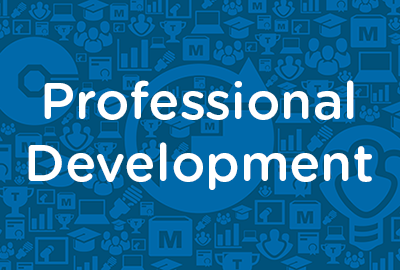 |
Interviewing Skills: EEO Guidelines |
0.50 |
The Equal Employment Opportunity Commission (EEOC) administers and enforces Title VII, which prohibits discrimination in employment on the basis of race, color, religion, sex (including gender identity, sexual orientation, and pregnancy), national origin, age (40 or older), disability, or genetic information. Other federal, state, and municipal laws also prohibit discrimination on these, and other, bases.
In this course you will learn to: list the provisions, general principles, and key terms of EEO, and identify appropriate and inappropriate interview questions, including those that are not permissible according to the law. |
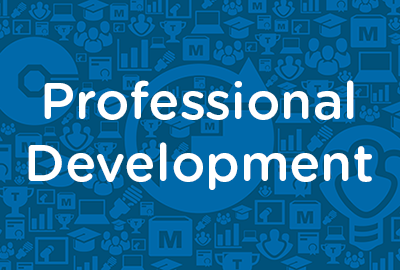 |
Interviewing Skills: Evaluating and Deciding |
0.67 |
When determining which candidate will be most successful in the job and your organization, you must complete two important steps. First, you should assess each candidate’s experience and past performance, and compare them to the job’s success factors. Then, you should compare candidates with one another to identify the one with the best fit for the job and culture.
In this course you will learn to: identify the types of bias and the steps to evaluate a candidate, and identify several criteria for ranking candidates. |
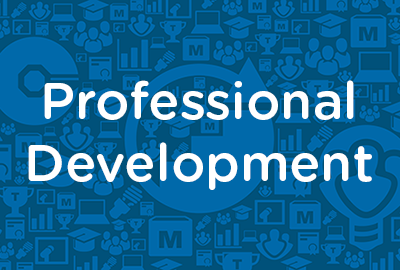 |
Interviewing Skills: Federal Laws |
0.67 |
Congress enacted the Americans with Disabilities Act (ADA) to provide a clear and comprehensive mandate to eliminate discrimination in employment against individuals with disabilities. This Act continues to have long-term benefits for American businesses, since it helps ensure that all workers have an opportunity to maximize their contributions to the productivity of the American economy.
The Immigration Reform and Control Act (IRCA) was signed into law in 1986 because of the large number of illegal aliens working in the United States. The purpose of the Act was to preserve jobs for those who are legally entitled to these, such as U.S. citizens and foreign nationals eligible to work in the United States. The Act is not a negative response to the diversification of the work force, but rather an acknowledgement of it, protecting the rights of both employer and candidate.
In this course you will learn to: define disability and identify the questions that are prohibited by the Americans with Disabilities Act, and hire employees legally under the Immigration Reform and Control Act and use Form I-9. |
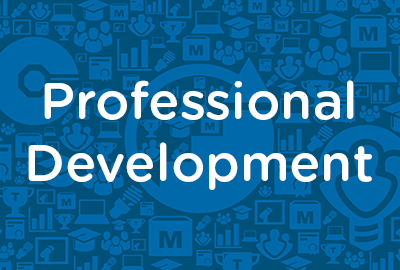 |
Interviewing Skills: Following Up |
0.67 |
Once you have conducted the interview, you need to do a follow-up and perform a self-evaluation of your interviewing skills.
In this course you will learn to: complete follow-up tasks after an interview. |
 |
Interviewing Skills: Fundamentals Of Interviews |
1.00 |
An interview is a planned, focused conversation that provides an employer with information needed to evaluate a candidate’s ability and motivation to perform a job successfully. In addition, interviews enable you to analyze an individual’s potential fit with an organization. To select the right candidate, you need to have a range of interviewing skills.
In this course you will learn to: discuss the benefits of interviewing skills and identify the various types of interviews, and define the success factors for a position and identify the steps involved in writing and finalizing those success factors. |
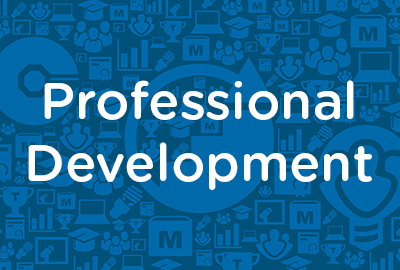 |
Interviewing Skills: Handling and Conducting |
1.00 |
Some interviewees demand a particularly focused and skillful use of interviewing techniques. Your ability to handle talkative, uncommunicative, nervous, or inexperienced candidates is important in order to get an accurate assessment of the candidate’s abilities. If you develop ways of handling various types of interviewees before the interview begins, you’ll be able to encourage them to respond positively and share information. You’ll also avoid the mistake of eliminating candidates on the basis of value judgments or preconceptions.
An interview is a two-way conversation designed to gather information about, and provide information to the candidate, so you both can decide on the fit between the position, the organization, and the candidate. Good interviews flow smoothly when both the interviewer and the candidate take part in an information exchange.
In this course you will learn to: handle an interview by developing an understanding of the various types of candidates, and conduct an interview by following a specific structure and using effective communication techniques. |
 |
Interviewing Skills: Planning and Preparing |
1.00 |
Once you have written success factors related to the position you are filling, you need to plan for the interview.
In this course you will learn to: identify the steps to establish a plan for an interview, and identify the steps to prepare an office for an interview. |
 |
Managerial Leadership: Coping Through a Change Process |
1.00 |
Whether your employees perceive change as positive or negative, you might encounter an emotional response from them. They will have many questions regarding their roles, competencies, and, possibly, even their futures. Your employees might feel they are being forced out of a comfort zone, and they might experience a loss of familiarity. Typical responses during a change include feelings of doubt, anxiety, fear, and anger. Sometimes, changes in the workplace can trigger a severe emotional response.
In this course you will learn to: respond to distress and reduce stress, and succeed through failure and deal with mistakes. |
 |
Managerial Leadership: Defining Employee Roles and Priorities |
1.50 |
A vision is created by an organization to inspire its members to work together to reach for an ideal of what the organization can become. The members of the organization should use the vision as the standard to determine the day-to-day functions of their individual roles. The vision is the guide to use every time an action is taken, a decision is made, or a plan is developed to improve the organization or the people in it. An organization’s vision should enable the members in every role to do what is in the best interest of the organization.
In this course you will learn to: determine leader roles and strengthen employee roles, and align employee priorities and evaluate employee performance. |
 |
Managerial Leadership: Employing Motivational Strategies |
0.50 |
You need to use motivational strategies in your leadership to help your employees perform optimally, and to make them feel as though they are helping meet a need. When you motivate your employees to accomplish their goals, and give them the necessary feedback to optimize their performance, they feel they are helping meet the organization’s needs.
You, your employees, and your organization all benefit when you use motivation in leadership. You benefit because, through motivation, your work group will perform optimally. Your employees benefit because they experience job satisfaction and success in accomplishing their goals. Your organization benefits because its members are more committed to helping it be successful and grow.
In this course you will learn to: motivate employees and overcome employee apathy. |
 |
Managerial Leadership: Leading with a Vision |
1.50 |
An organization does not generate itself—it is founded by one or more people who take the initiative to put an idea into action. Leadership is the cement that unites members of an organization to achieve a common end.
Leadership helps members of an organization understand the organization’s purpose, and makes sure they do not lose sight of the organization’s vision. If an organization functions ineffectively, leadership helps members cope with the changes needed to improve the organization, enabling fulfillment of the vision or goals.
Leadership also helps members of an organization work to their full potential. If a team has the ability and resources to complete a task, leadership can provide the motivation and inspiration the team needs to complete the task.
In this course you will learn to: Identify a leader, define the vision of an organization and write a vision statement, and relate goals to the vision statement. |
 |
Managerial Leadership: Making Vision a Reality |
1.00 |
An organization’s vision must be communicated in a manner that inspires people to participate in fulfilling it. Before members of an organization work to their full potential, they must first understand what it is they are working for—to make the organization’s vision a reality.
It is through communication that a leader gains support for the organization’s vision. People will not commit to something blindly, nor should they be expected to commit without information. Therefore, when, how, and to whom an organization’s vision is communicated is of great importance to the successful fulfillment of the vision.
Your organization’s vision must be communicated to the people who’ll have a hand in fulfilling it, as well as to the people who’ll be affected by it, such as clients or investors. Your organization’s vision should also be communicated to potential employees, or other people in the community who come into contact with your organization.
In this course you will learn to: communicate the vision, gain support for the vision, and empower employees, and implement the organization’s vision. |
 |
Managerial Leadership: Motivating Employees Through Change |
0.50 |
Your organization’s vision was created to inspire and unite the members of the organization as they work toward achieving common goals. Change can distract employees from the vision because going through the change process can be intensely personal and emotional. Remembering the vision and its purpose can keep your employees focused on their role in the company.
In this course you will learn to: motivate employees through a change and prepare for difficulty, and overcome resistance and resolve conflict. |
 |
Managerial Leadership: Planning for Change |
0.50 |
In order to understand the need for change, you must remember one thing: change is constant. Change is a necessary response to an active force. The active force can either be a pressure, which you can attempt to manage in a step-by-step manner, or a crisis, which requires your immediate attention.
In this course you will learn to: identify the phases of the change process, and communicate change and identify the benefits of change. |
 |
Managing Performance: Appraising Employee Performance |
1.67 |
The performance appraisal process is an integral part of performance management. It consists of two phases that must be carefully planned and executed: establish a performance plan and complete the performance appraisal process.
In this course you will learn to: understand the performance appraisal process, identify and gather appraisal material, prepare for an appraisal discussion, lead employees in an appraisal discussion, and respond to defensive employees and resolve conflict in an appraisal discussion. |
 |
Managing Performance: Legal Appraisals |
0.84 |
In this course you will learn to: identify legal appraisals and responsibilities in relation to laws enforced by the EEOC, and identify risks of legal challenges and the importance of maintaining positive communication. |
 |
Managing Performance: Performance Improvements |
1.34 |
In the performance appraisal process, there are three steps you must complete before you can help an employee make performance improvements.
1. Appraise an employee’s performance
2. Conduct an appraisal discussion
3. Help an employee make performance improvements
In this course you will learn to: plan performance improvements, handle performance problems, and use effective communication to solve performance problems, conduct status meetings, and maintain documentation of ongoing communication. |
 |
Managing Performance: Performance Management Basics |
1.00 |
Performance management is a process that allows for ongoing communication between employees and managers that results in employees striving for, and reaching, their potential.
In this course you will learn to: define performance management and identify its common pitfalls, understand the importance of creating a performance management plan and the steps involved in establishing a plan, and identify the process for discussing and creating an effective job description. |
 |
Managing Performance: Performance-Planning Meetings |
1.17 |
In this course you will learn to: identify the steps to conduct an effective performance-planning meeting, identify the process of providing feedback, and identify types of coaching, and document coaching and feedback efforts. |
 |
Media and Social Media Best Practices |
0.25 |
The purpose of this course is to ensure you are aware of organizational best practices in regard to contact with Media, and use of Social Media. This policy is intended to support ALL employees and volunteers in making the best decisions for the organization. |
 |
Motivation: Identifying, Planning, and Implementing: Basics Of Motivation |
1.00 |
If you’re going to take a trip by driving from New York to Los Angeles, you’ll need several tanks of gas. Similarly, if you plan to take a trip that will move you closer to a personal or professional goal, you can expect that you will need several refills of your motivation tank to give you the energy to get there. People say that a journey of a thousand miles begins with a single step, but it’s extremely difficult to continue taking steps when your personal-motivation fuel tank is empty.
In this course you will learn to: describe the basics of motivation, define motivation as a process, and describe some theories about how motivation can affect your productivity. |
 |
Motivation: Identifying, Planning, and Implementing: Positive Mental Attitude |
1.00 |
Your attitude affects every aspect in your life—from your family relationships to your interactions with strangers to your connections with business coworkers. Your attitude could determine the difference between getting a promotion and getting fired, and between a happy marriage and divorce. Stanford Research Institute (SRI) conducted a study that found that success is 88% attitude, and 12% education.
In this course you will learn to: improve your self-confidence, recognize your fears and work to overcome them, and identify the difference between perceptions and reality. |
 |
Motivation: Identifying, Planning, and Implementing: The Core Four |
1.00 |
Surrounding the positive mental attitude are the Core Four components. These key areas of focus are critical to your motivation and your success. The Core Four elements are health, competence, relationships, and organization. Each of these elements requires focused attention. Without attention to one area, your life will be out of balance. Each area complements the other and is powered by your positive attitude.
In this course you will learn to: strive for good health to foster a positive mental attitude, maintain your competence to nurture a positive mental attitude, improve your relationships to indirectly improve a positive mental attitude, and strive to be organized to encourage a positive mental attitude. |
 |
Motivation: Identifying, Planning, and Implementing: The Motivation Process |
1.00 |
The motivation process involves four phases: identifying, planning, implementing, and evaluating. Each phase is distinct, but you will notice that the process is arranged in a continuous circle, because it is ongoing.
In this course you will learn to: identify your goals and plan the necessary steps to reach these goals, and implement your plan and evaluate its progress to strive for peak performance levels. |


























